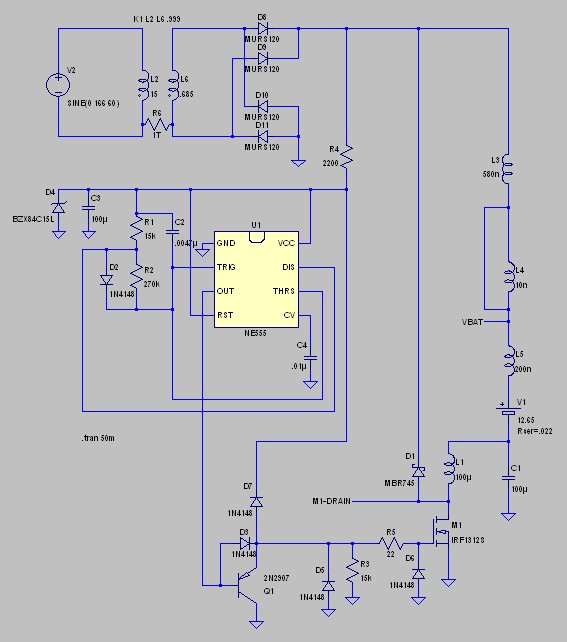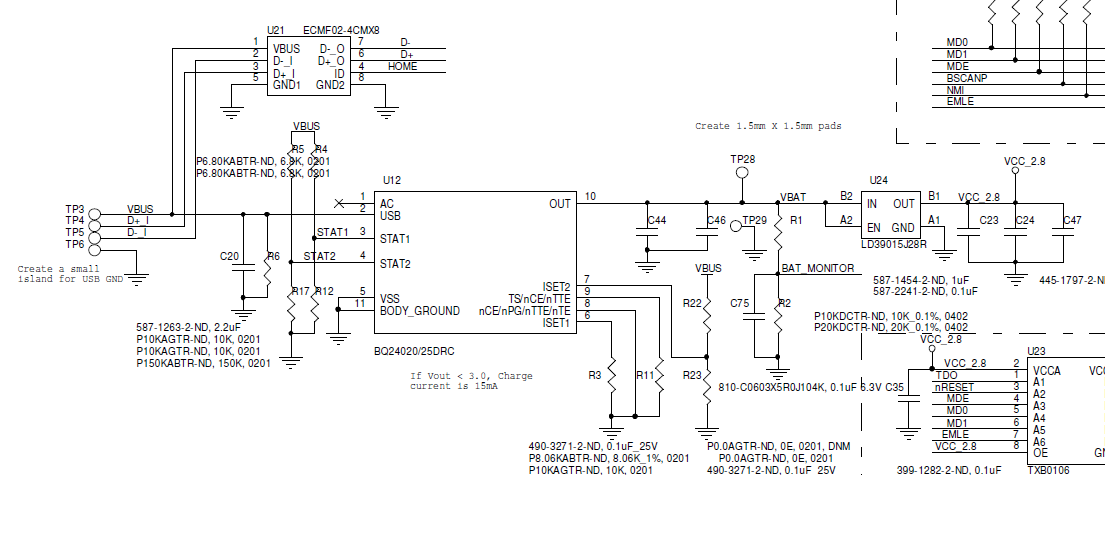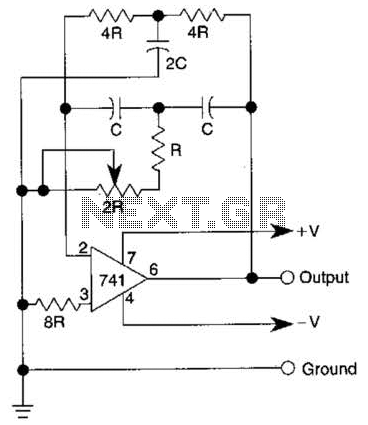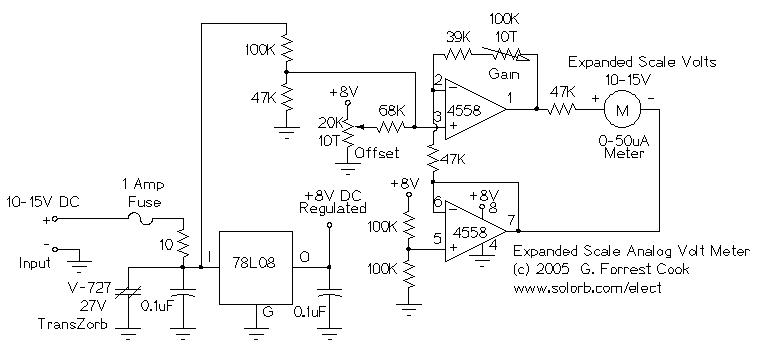
Micropower battery splitter
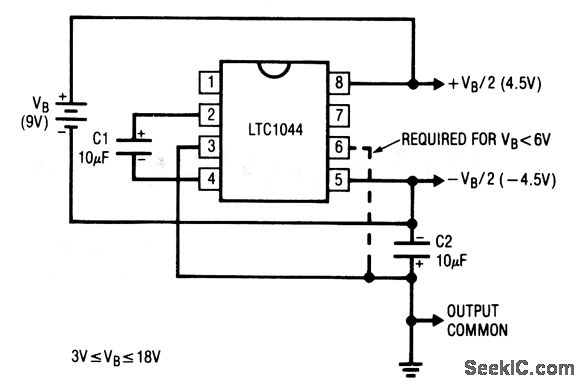
This circuit generates symmetrical ±output voltages, each equal to one-half of the input voltage (for example, a single 9-V battery). The output voltages are referenced to pin 3, which serves as the output common. The circuit is compatible with different battery voltages. If the battery voltage exceeds 6 V, pin 6 must be connected to pin 3, as indicated by the dashed line in the schematic.
The described circuit functions as a voltage divider and inverter, producing dual output voltages that are symmetrical around a common reference point. The configuration typically involves operational amplifiers (op-amps) or a dedicated voltage inverter IC. The input voltage, which can be supplied by a single battery, is divided to create two output voltages: +Vout and -Vout, each at half the input voltage level.
In practical applications, when using a 9-V battery, the circuit generates +4.5 V and -4.5 V outputs. The reference point at pin 3 is crucial as it establishes a ground level for both output voltages, ensuring that the circuit can interface with other components effectively.
When the input voltage exceeds 6 V, the requirement to connect pin 6 to pin 3 ensures stability and proper operation of the circuit. This connection helps to maintain the integrity of the output voltages by providing a consistent reference point, preventing potential issues related to voltage fluctuations or unbalanced outputs.
The design can be implemented on a breadboard for prototyping or as a printed circuit board (PCB) for more permanent installations. Careful consideration should be given to the choice of components, including resistors and capacitors, to optimize performance and minimize noise in the output signals. Proper bypass capacitors should be employed near the power supply pins of the op-amps to ensure stable operation under varying load conditions.
Overall, this circuit is versatile and can be adapted for various applications requiring dual voltage supplies, such as powering analog sensors or operational amplifiers that require dual polarity supplies for signal processing.This circuit provides symmetrical ±output voltages, both equal to one-half the input voltage (one 9-V battery in this case). The output voltages are referenced to pin 3 (output common). The circuit will operate with other battery voltages. If the battery exceeds 6 V, pin 6 should also be connected to pin 3, as shown by the dashed line. 🔗 External reference
The described circuit functions as a voltage divider and inverter, producing dual output voltages that are symmetrical around a common reference point. The configuration typically involves operational amplifiers (op-amps) or a dedicated voltage inverter IC. The input voltage, which can be supplied by a single battery, is divided to create two output voltages: +Vout and -Vout, each at half the input voltage level.
In practical applications, when using a 9-V battery, the circuit generates +4.5 V and -4.5 V outputs. The reference point at pin 3 is crucial as it establishes a ground level for both output voltages, ensuring that the circuit can interface with other components effectively.
When the input voltage exceeds 6 V, the requirement to connect pin 6 to pin 3 ensures stability and proper operation of the circuit. This connection helps to maintain the integrity of the output voltages by providing a consistent reference point, preventing potential issues related to voltage fluctuations or unbalanced outputs.
The design can be implemented on a breadboard for prototyping or as a printed circuit board (PCB) for more permanent installations. Careful consideration should be given to the choice of components, including resistors and capacitors, to optimize performance and minimize noise in the output signals. Proper bypass capacitors should be employed near the power supply pins of the op-amps to ensure stable operation under varying load conditions.
Overall, this circuit is versatile and can be adapted for various applications requiring dual voltage supplies, such as powering analog sensors or operational amplifiers that require dual polarity supplies for signal processing.This circuit provides symmetrical ±output voltages, both equal to one-half the input voltage (one 9-V battery in this case). The output voltages are referenced to pin 3 (output common). The circuit will operate with other battery voltages. If the battery exceeds 6 V, pin 6 should also be connected to pin 3, as shown by the dashed line. 🔗 External reference

